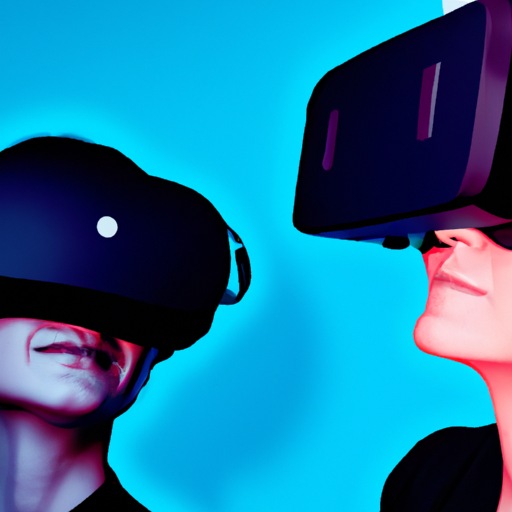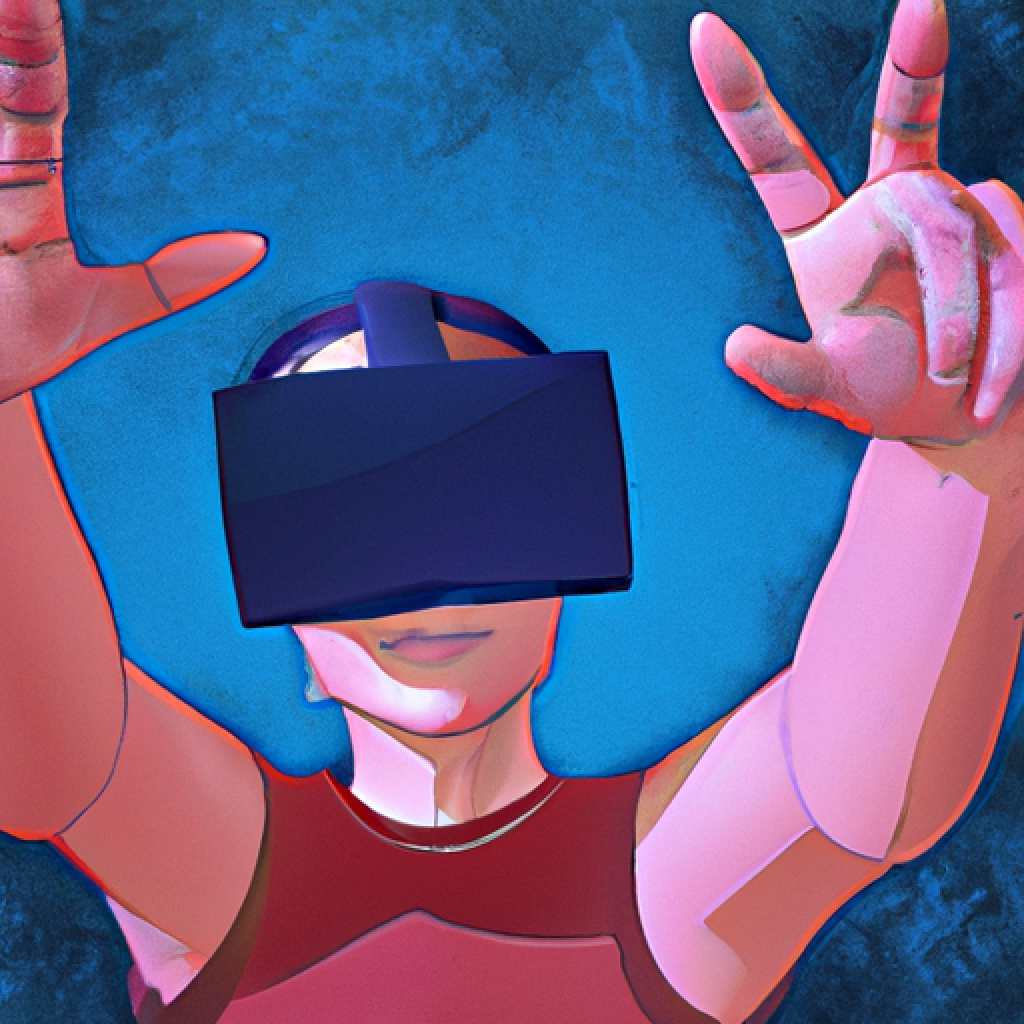How Does Virtual Reality Affect The Brain?

Virtual reality has rapidly gained popularity over the years, but have you ever wondered how it actually affects our brain? The immersive experience of virtual reality can have a profound impact on our cognitive functioning and perception. From altering our sense of time and space to enhancing our memory and learning abilities, virtual reality has the potential to reshape how our brains process information. In this article, I will explore the fascinating ways in which virtual reality interacts with our brain and the potential implications for our future.

Understanding Virtual Reality
Definition of Virtual Reality
Virtual Reality (VR) refers to a simulated experience that can be similar to or completely different from the real world. It typically involves the use of computer technology, such as headsets and controllers, to create an immersive and interactive environment. In VR, users can explore and interact with computer-generated environments, often experiencing a sense of presence and feeling as if they are physically present in the virtual world.
Brief History of Virtual Reality
The concept of virtual reality has been around for decades, but it wasn’t until the late 20th century that technology advanced enough to bring it into reality. The term “virtual reality” was coined by Jaron Lanier in the 1980s. However, the roots of VR can be traced back to the 1960s when Ivan Sutherland developed the “Sword of Damocles,” which is considered the first head-mounted display.
Since then, progress in computer graphics, display technology, and motion tracking has propelled virtual reality into the mainstream. In the 1990s, VR gained popularity in the gaming industry with the release of devices like the Virtual Boy. More recently, companies like Oculus and HTC Vive have revolutionized VR with high-quality headsets and immersive experiences.
Applications of Virtual Reality
Virtual reality has found applications in various fields beyond gaming. In healthcare, VR is being used for training medical professionals, surgical simulations, pain management, and even exposure therapy for phobias. In education, VR offers immersive learning experiences, allowing students to explore historical sites, dive into the depths of the ocean, or interact with molecules on a molecular level.
VR is also making significant strides in architecture and design, allowing architects to visualize and walk through their creations before they are built. Additionally, it has shown promise in industries such as tourism, entertainment, military, and rehabilitation. The potential applications of virtual reality are vast and continually expanding as technology progresses.
The Human Brain and Perception
How the Human Brain Processes Reality
The human brain is a powerful organ responsible for processing and interpreting the information received from our sensory organs. It constructs our perception of reality by integrating sensory inputs from sight, hearing, touch, taste, and smell. These inputs are processed and analyzed in different regions of the brain, allowing us to make sense of the world around us.
The brain relies on a complex network of neurons that communicate through electrical and chemical signals. It processes incoming sensory information, compares it with stored memories and knowledge, and generates a coherent representation of the world. Our brain’s ability to perceive reality is influenced by our past experiences, cultural upbringing, and individual cognitive processes.
Perception and Sense of Presence
Perception refers to the way our brain interprets sensory information and creates our subjective experience of the world. It involves the integration and interpretation of signals from various sensory modalities, such as vision, hearing, and touch. In the context of virtual reality, the goal is to create an illusion of presence, where users feel as if they are physically present in the virtual environment.
The sense of presence in VR is achieved through a combination of factors, including realistic visuals, spatial audio, haptic feedback, and interactive elements. When these elements align, our brain can suspend disbelief and perceive the virtual world as real. The more convincing the experience, the stronger the sense of presence, which enhances the immersive nature of virtual reality.
The Role of Sensory Input in Perception
Sensory input plays a crucial role in perception and how our brain constructs reality. The brain relies on sensory information to gather data about the external world and make sense of it. In the context of virtual reality, sensory input is simulated to create the illusion of a different reality.
Visual input is especially important in virtual reality, as it provides the primary source of information for perceiving the virtual environment. The quality and fidelity of visual stimuli significantly impact the user’s perception and immersion. Similarly, audio cues and haptic feedback contribute to the overall sensory experience, influencing how the brain processes and interprets the virtual world.
The Impact of Virtual Reality on Perception
Altering Perception Through Virtual Reality
Virtual reality has the unique ability to alter our perception of reality by immersing us in virtual environments that can be vastly different from the physical world. Through carefully designed visual and auditory cues, VR can manipulate our senses and create realistic illusions.
For example, VR can transport us to an entirely different location, such as outer space or the depths of the ocean, allowing us to experience sights and sounds that would otherwise be inaccessible. Additionally, VR can alter the perception of scale, making objects appear larger or smaller than they actually are, leading to a distorted sense of reality.
Dissociation Between Physical and Virtual Reality
One of the fascinating aspects of virtual reality is that it can create a dissociation between physical and virtual reality. When immersed in a virtual environment, our brain can override the signals from the physical world and prioritize the sensory input from VR.
This dissociation can lead to a phenomenon known as the “cybersickness” or “simulator sickness,” where users may experience disorientation, dizziness, and nausea due to conflicting sensory inputs. The brain struggles to reconcile the conflicting information, which can disrupt the sense of presence and result in discomfort.
Can Virtual Reality Change Our Brain’s Perception?
While virtual reality can influence our perception during the VR experience, there is ongoing research to understand if these changes can extend beyond the virtual environment. Studies have shown that VR can induce short-term perceptual adaptations, such as altering depth perception or time perception. However, the extent to which these changes persist after leaving the VR environment is still being explored.
Some research suggests that repeated exposure to virtual reality can lead to long-term changes in the brain’s perception processes. For example, studies have shown that VR training can improve hand-eye coordination and spatial awareness, indicating that the brain can adapt and incorporate VR experiences into its perceptual framework.
Neurological Responses to Virtual Reality
VR and the Release of Dopamine
Dopamine is a neurotransmitter in the brain associated with reward and motivation. Virtual reality has been found to stimulate the release of dopamine, which may contribute to the pleasurable and immersive nature of VR experiences.
When users engage in virtual activities that trigger a sense of achievement, exploration, or competition, the brain’s reward system is activated, leading to the release of dopamine. This neurotransmitter promotes feelings of pleasure and reinforces the association between the virtual experience and positive emotions.
Effect of VR on the Amygdala
The amygdala is a part of the brain involved in emotional processing, particularly fear and anxiety. Studies have shown that virtual reality can activate the amygdala and elicit emotional responses that mimic real-world experiences.
By creating virtual scenarios that evoke fear or anxiety, such as simulating heights or confronting phobias, virtual reality can provide a controlled environment for exposure therapy. The activation of the amygdala during VR experiences allows individuals to confront and manage their fears in a safe and controlled setting.
Changes in Brain Waves During VR Use
Brain waves, which represent the electrical activity in the brain, can provide insights into the neurological responses to virtual reality. Various studies have observed changes in brain wave patterns during VR experiences, indicating altered states of consciousness and cognitive processing.
For example, researchers have observed an increase in alpha waves, which are associated with relaxation and attention, during VR relaxation experiences. On the other hand, engaging in action-packed VR games has been found to increase beta waves, which reflect increased focus and arousal. These changes in brain wave patterns suggest that virtual reality can impact cognitive processes and emotional states.

The Role of Immersion in Virtual Reality
Defining Immersion
Immersion in virtual reality refers to the extent to which users feel completely absorbed and engaged in the virtual environment. It involves the integration of visual, auditory, and haptic cues, as well as interactive elements, that make the virtual experience feel realistic and captivating.
The level of immersion can vary depending on factors such as the quality of the VR hardware, the fidelity of the virtual environment, and the level of interactivity. The more immersive the experience, the more the user’s attention becomes focused on the virtual world, heightening the sense of presence and enhancing the overall user experience.
How Immersion Affects User Experience
Immersion plays a crucial role in shaping the user experience in virtual reality. When users are fully immersed in a virtual environment, they are more likely to suspend disbelief and perceive the virtual world as real. This suspension of disbelief can lead to increased engagement, emotional connection, and a heightened sense of presence.
High levels of immersion can lead to a more compelling and impactful experience, whether it’s exploring a fantasy world, solving complex puzzles, or interacting with virtual characters. Additionally, immersion can enhance the effectiveness of VR applications in therapy and training, where creating a realistic and engaging experience is crucial for achieving desired outcomes.
Implications of Full Immersion in VR
Full immersion in virtual reality has the potential to revolutionize various industries and unlock new possibilities. Imagine being able to visit historical events, walk through architectural designs, or interact with remote environments in a fully immersive and realistic manner.
However, with the potential for full immersion comes the need to consider potential ethical implications. In a fully immersive VR experience, users may become so engrossed in the virtual world that they disconnect from their physical surroundings. This could pose safety risks, as users may be less aware of their immediate environment or fail to recognize potential dangers.
Balancing the benefits of full immersion with the need for responsible usage and maintaining awareness of the physical world is crucial for ensuring the safe and effective integration of virtual reality into our lives.
Virtual Reality and Memory Formation
Influence of VR on Memory Retention
Virtual reality has shown potential in enhancing memory formation and retention. By creating immersive experiences that engage multiple senses, VR can stimulate the brain and facilitate the encoding and consolidation of memories.
Studies have demonstrated that VR experiences can improve memory recall and retention compared to traditional two-dimensional media. For example, VR-based learning simulations have been found to enhance knowledge retention, spatial memory, and procedural memory.
The interactive nature of VR, combined with the sense of presence and emotional engagement it provides, creates a more memorable and immersive learning experience. By actively engaging with the virtual environment, users can form stronger memory associations and retrieve information more effectively.
Using VR for Memory Recall
Virtual reality can also be used as a tool for memory recall and reminiscing. By recreating past experiences or familiar environments, VR can evoke memories and trigger emotions associated with those memories.
For individuals with neurodegenerative conditions like Alzheimer’s disease, VR can offer a unique way to preserve and engage their memories. Virtual reality experiences that simulate familiar settings or recreate significant life events may help stimulate cognitive function, evoke memories, and enhance quality of life.
Furthermore, VR can be utilized in therapy settings to help individuals process traumatic memories or confront specific fears by recreating triggering situations in a controlled and safe environment.
Can Virtual Reality Enhance Our Memory?
While VR shows promise in enhancing memory in various contexts, it is essential to note that the effectiveness of VR-based memory enhancements can vary depending on factors such as individual differences, the design of the VR experience, and the specific memory task.
Further research is needed to understand the optimal conditions and techniques for leveraging virtual reality to enhance memory. However, the potential to create personalized and highly engaging memory-enhancing experiences in virtual reality opens up exciting possibilities for cognitive training, rehabilitation, and educational interventions.

Virtual Reality Exposure Therapy
Principles of Virtual Reality Exposure Therapy
Virtual Reality Exposure Therapy (VRET) is a therapeutic approach that utilizes virtual reality to help individuals confront and overcome specific fears and phobias. It provides a controlled and safe environment where individuals can gradually expose themselves to the feared stimulus, under the guidance of a therapist.
The principles of VRET are based on the concept of systematic desensitization, where individuals are exposed to fear-inducing stimuli in a graded and controlled manner. By repeatedly exposing individuals to the feared stimulus, VRET aims to reduce anxiety, modify negative thoughts and beliefs, and promote a sense of mastery and self-efficacy.
Virtual reality provides a flexible and customizable platform for delivering exposure therapy. Therapists can adjust the virtual environment, gradually increasing the intensity of the stimuli or incorporating different scenarios to accommodate individual needs.
Benefits of VRET in Treating Phobias
Virtual Reality Exposure Therapy has proven to be highly effective in treating various phobias and anxiety disorders. Compared to traditional exposure therapy, the use of virtual reality offers several unique advantages.
One of the main benefits of VRET is the ability to create highly realistic and customizable virtual environments that accurately simulate the feared stimulus. This level of control allows therapists to create exposure scenarios that closely match the individual’s specific fear and gradually progress in difficulty. Furthermore, VR provides a safe and controlled setting for exposure, reducing the risk of harm or trauma associated with real-world exposures.
Studies have shown that VRET can produce significant reductions in phobic symptoms, anxiety, and avoidance behaviors. It also allows for more efficient treatment delivery, as it eliminates logistical barriers and can be administered remotely.
The Impact of VRET on the Brain
Virtual reality exposure therapy influences the brain by activating neural pathways associated with fear and anxiety. By repeatedly exposing individuals to anxiety-provoking stimuli in a VR environment, VRET helps rewire the brain’s response to those stimuli.
Functional MRI studies have shown that VRET can lead to changes in brain activity and connectivity patterns associated with fear processing. These changes indicate a reduction in the fear response and an increase in the brain’s ability to regulate emotions.
By targeting and reshaping the neural circuits involved in fear and anxiety, VRET can produce lasting changes in the brain’s response to fear-inducing stimuli, ultimately leading to symptom reduction and improved psychological well-being.
The Effects of Prolonged VR Usage
Potential Negative Implications on Brain Health
While virtual reality offers exciting possibilities, prolonged and excessive use of VR may have potential negative implications for brain health. Excessive exposure to virtual reality can lead to sensory overload, cognitive fatigue, and disruption of the brain’s normal functioning.
The intense and immersive nature of VR experiences can place significant demands on the brain’s processing capacity, potentially leading to mental fatigue and reduced cognitive performance. Additionally, prolonged use of VR may lead to decreased physical activity, social isolation, and neglect of real-world responsibilities, which can impact overall brain health.
However, it is important to note that the majority of research on the long-term effects of VR usage is limited, and further studies are needed to understand the potential risks and mitigation strategies.
VR-Induced Motion Sickness
Motion sickness is a common side effect of virtual reality experiences, especially when the VR visuals do not align with the user’s physical movements. This mismatch between visual and vestibular cues can cause a sense of disorientation and nausea.
The inner ear plays a crucial role in maintaining our sense of balance and spatial orientation. When the visual information provided by VR contradicts the signals received from the inner ear, it can lead to motion sickness symptoms.
To mitigate VR-induced motion sickness, developers are continuously improving the responsiveness and accuracy of tracking systems and minimizing latency between user actions and visual feedback. Additionally, gradually acclimating to VR experiences and taking breaks can help reduce the risk of motion sickness.
The Debate Around VR Addiction
As with any immersive and engaging technology, there is ongoing debate surrounding the potential for virtual reality addiction. Addiction refers to compulsive and repetitive behaviors that interfere with daily functioning and result in negative consequences.
While research on VR addiction is limited, the elements that make virtual reality highly immersive and captivating could potentially lead to excessive usage and neglect of real-world responsibilities. Excessive use of VR can impact social interactions, physical health, and mental well-being, similar to other forms of technology addiction.
However, it is important to approach the topic with caution and recognize that not everyone who uses VR will develop addictive behaviors. Responsible usage, setting limits, and maintaining a healthy balance between virtual and real-world experiences are key factors in mitigating the risk of VR addiction.

Cognitive Development and VR
How VR Can Improve Cognitive Skills
Virtual reality has the potential to improve various cognitive skills by providing opportunities for active and interactive learning experiences. The immersive nature of VR engages multiple senses, enhances attention and focus, and promotes problem-solving and critical thinking skills.
For example, VR-based educational games and simulations can enhance spatial cognition, mental rotation abilities, and executive functions. By requiring users to navigate and manipulate objects in a virtual space, VR activates the brain’s spatial awareness and promotes cognitive flexibility and working memory.
Additionally, virtual reality can simulate complex scenarios that challenge decision-making skills and enhance cognitive abilities such as strategy, planning, and logical reasoning. By providing a dynamic and interactive learning environment, VR offers a unique platform for cognitive development.
The Role of VR in Enhancing Spatial Awareness
Spatial awareness refers to our ability to perceive and understand objects and their relationships in a given space. Virtual reality has been found to enhance spatial awareness by engaging the brain’s spatial processing systems and promoting the integration of visual and proprioceptive information.
Studies have shown that VR experiences can improve spatial cognition, mental mapping abilities, and spatial memory. By providing users with the opportunity to interact with 3D environments and navigate through virtual spaces, VR stimulates the brain’s spatial processing networks, ultimately leading to improved spatial awareness.
The ability to enhance spatial awareness through virtual reality has significant implications in fields such as architecture, engineering, and navigation, where spatial thinking and visualization skills are essential.
Implications of VR on Child Cognitive Development
Virtual reality has unique implications for child cognitive development. The combination of immersive experiences, interactive learning, and multisensory stimulation can promote cognitive growth and provide valuable learning opportunities for children.
By engaging children in VR-based educational games and simulations, virtual reality can enhance attention, memory, problem-solving, and spatial cognition. The active and hands-on nature of VR experiences allows children to explore and interact with virtual worlds, facilitating their cognitive development through experiential learning.
However, it is important to consider the potential risks and limitations of VR usage for children, including potential eye strain, overstimulation, and excessive screen time. Age-appropriate content, supervision, and ensuring balanced usage are crucial in harnessing the benefits of VR for child cognitive development.
Does Virtual Reality Have Negative Effects on the Brain?
Virtual Reality (VR) headsets have gained significant popularity in recent years, raising concerns about their impact on the brain. While some studies suggest that excessive use of VR headsets may cause negative effects, such as dizziness and motion sickness, others argue that they can enhance cognitive abilities and improve social skills. Therefore, the question vr headsets: good or bad?? remains a subject of ongoing debate in the scientific community.
Future Implications of VR Neuroscience Research
Current Limitations in the Field
As virtual reality continues to evolve, there are several challenges and limitations that researchers and developers are actively working to address. Some of the current limitations in the field of VR neuroscience research include:
-
Hardware limitations: VR hardware is continuously improving, but there is still room for advancement in terms of resolution, field of view, and comfort. Higher fidelity and less cumbersome devices would enhance the overall VR experience and provide more accurate data for neuroscience research.
-
Individual variability: People have different cognitive processes, emotional responses, and tolerance levels to virtual reality. This individual variability poses challenges when attempting to generalize findings from VR neuroscience research. Understanding and accommodating these individual differences is crucial for tailoring VR experiences to individual needs.
-
Long-term effects: While short-term effects of virtual reality on the brain have been studied, there is a need for longitudinal research to understand the long-term impact of prolonged VR usage on brain health, cognitive function, and mental well-being.
Potential Future Discoveries
Despite current limitations, ongoing research in VR neuroscience holds great potential for future discoveries. As technology advances, we can expect to see:
-
Enhanced sensory experiences: With the development of more advanced haptic feedback systems, realistic haptic interactions, and improved visual and auditory fidelity, virtual reality experiences will become even more immersive and indistinguishable from reality.
-
Neuroadaptive VR systems: VR systems that adapt in real-time to individual cognitive and emotional states could tailor the virtual experience to optimize therapeutic outcomes, enhance learning, and create personalized experiences based on individual preferences.
-
Brain-computer interfaces: The integration of virtual reality with brain-computer interfaces could enable direct communication between the brain and virtual environments. This could allow for more intuitive control and interaction within VR, enhancing the sense of presence and opening up new possibilities for individuals with physical disabilities.
The Ethics of VR and Neuroscience
As virtual reality and neuroscience become increasingly intertwined, ethical considerations become crucial. Some of the ethical issues that need to be addressed include:
-
Informed consent: Participants in VR neuroscience studies must understand potential risks, benefits, and the implications of the research. Informed consent procedures should ensure participants are fully aware of the procedures, data collection, and potential implications for their privacy.
-
Privacy and data security: VR experiences generate vast amounts of personal data, including physiological responses, behavior patterns, and emotional states. Protecting and securing this data is paramount to ensure privacy and prevent potential misuse.
-
Unintended consequences: Virtual reality has the potential to influence emotions, behaviors, and beliefs. Ethical considerations should include preventing unintended negative consequences, such as promoting violence, reinforcing biases, or manipulating individuals’ thoughts and behaviors.
-
Access and equity: Ensuring equitable access to virtual reality experiences and the benefits of neuroscience research is critical. Efforts should be made to minimize the digital divide and ensure that marginalized populations have equal opportunities to engage with VR technologies and benefit from neuroscience advancements.
As the field progresses, ongoing discussions and collaboration between researchers, developers, and policymakers will be essential to establish ethical guidelines and responsible practices in the intersection of virtual reality and neuroscience.
In conclusion, virtual reality has the potential to significantly impact perception, cognitive function, memory formation, and therapeutic interventions. Through its immersive and interactive nature, VR engages multiple senses, alters perception, and influences neural processes in the brain. While the field of VR neuroscience is still relatively young, ongoing research is uncovering new insights into the effects of virtual reality on the brain. Understanding the potential benefits, limitations, and ethical considerations of virtual reality is crucial as we continue to explore the frontiers of this fascinating technology.








